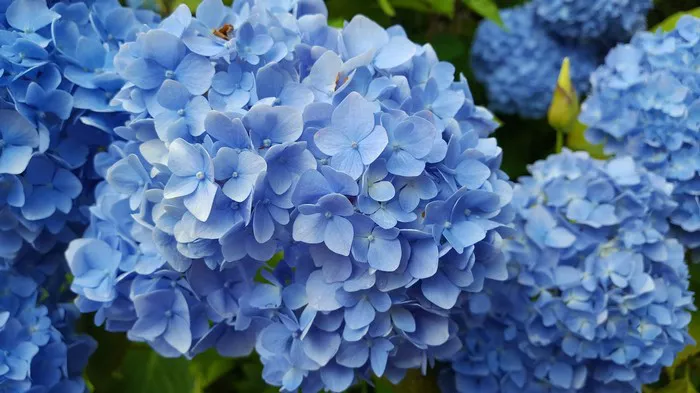Hydrangeas, with their captivating blooms ranging from delicate pastels to vibrant hues, have long been a favorite among gardeners and flower enthusiasts alike. Among the many factors that contribute to the diverse spectrum of colors exhibited by hydrangea flowers, soil pH, aluminum availability, genetic predisposition, cultural practices, species specificity, original color and age, as well as environmental influences, play pivotal roles. Understanding these determinants is key to cultivating and maintaining the desired color palette in hydrangea blooms.
Overview of Hydrangea Colors
Hydrangeas boast an impressive array of colors, including shades of pink, blue, purple, and white. These colors are not merely ornamental variations but are indicative of underlying biochemical processes within the plant. While some hydrangea varieties display a single color throughout their blooms, others exhibit a delightful blend of shades, adding depth and intrigue to their aesthetic appeal.
1. Soil pH Influence
One of the most well-known factors influencing hydrangea coloration is soil pH. Soil pH directly affects the availability of aluminum in the soil, which in turn impacts the uptake of aluminum by the hydrangea plant. In acidic soils with a pH below 5.5, aluminum becomes more soluble and readily available to the plant. This abundance of aluminum promotes the synthesis of pigments responsible for blue and purple hues in hydrangea blooms. Conversely, in alkaline soils with a pH above 6.5, aluminum availability is limited, resulting in pink or red flower colors.
2. Aluminum Availability
The role of aluminum in hydrangea coloration cannot be overstated. Aluminum ions, when taken up by the plant’s roots, undergo a series of biochemical reactions that culminate in the formation of pigments known as anthocyanins. These anthocyanins are responsible for the blue and purple hues observed in hydrangea flowers. The presence or absence of aluminum in the soil directly influences the synthesis of these pigments, thereby determining the color outcome.
3. Genetic Component
While soil pH and aluminum availability play significant roles in hydrangea coloration, it is important to note that not all hydrangea varieties possess the genetic capability to change color. Some cultivars exhibit inherent color stability and may only produce certain hues regardless of soil conditions. Understanding the genetic makeup of different hydrangea varieties is essential for selecting plants that can achieve the desired color transformations.
4. Cultural Practices
Gardeners can manipulate soil conditions to encourage the desired color change in hydrangea blooms. For those seeking blue or purple hues, acidifying the soil through the addition of elemental sulfur or acidic organic matter can lower the pH and increase aluminum availability. Conversely, to promote pink or red tones, raising the pH with the application of lime or alkaline materials can reduce aluminum uptake. Regular soil testing is crucial for monitoring pH levels and making appropriate adjustments to maintain optimal conditions for desired color outcomes.
5. Species-Specific Information
It is important to recognize that not all hydrangea species possess the ability to change color in response to soil pH. Certain species, such as Bigleaf Hydrangea (Hydrangea macrophylla) and Mountain Hydrangea (Hydrangea serrata), exhibit pronounced color changes based on aluminum availability. These species are renowned for their chameleon-like ability to transition from pink to blue or vice versa, captivating gardeners with their versatility and charm.
6. Original Color and Age
The original color of hydrangea blooms, as well as their age, can influence their ability to undergo color changes. Young hydrangea plants may require time to establish themselves before exhibiting vibrant color transformations. Additionally, the original color of the blooms, determined by genetic factors and environmental conditions during bud formation, can impact the intensity and depth of subsequent color changes.
7. Environmental Factors
Environmental factors such as growing zones and temperature can also influence hydrangea color intensity. Different hydrangea species thrive in specific climate conditions, with variations in temperature and sunlight affecting overall plant health and vigor. Understanding the climatic requirements of each hydrangea variety is essential for optimizing color expression and ensuring robust growth.
Conclusion
In conclusion, the coloration of hydrangea flowers is a fascinating interplay of soil chemistry, genetic predisposition, cultural practices, and environmental influences. By understanding and manipulating these factors, gardeners can unlock the full spectrum of hydrangea colors, creating stunning displays that delight the senses and elevate outdoor spaces. With proper care and attention, hydrangeas continue to enchant and inspire, weaving a tapestry of color and beauty in gardens around the world.


